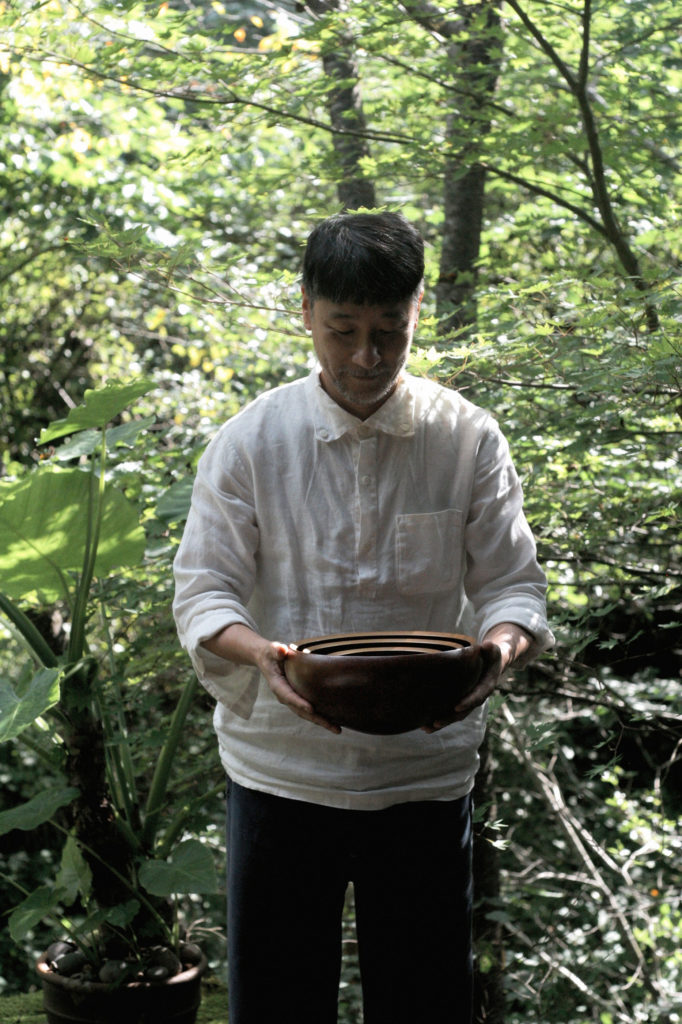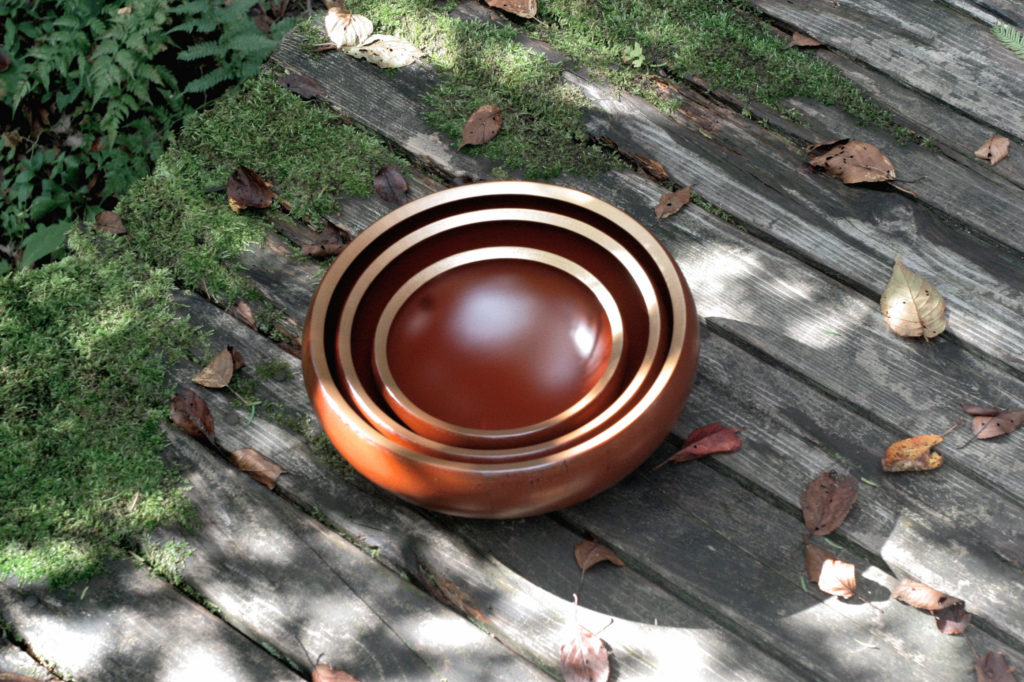Story 03 | A thousand year old lifeform
In Wajima, a single bowl or cup requires nearly a dozen craftsmen and a vast array of techniques and processes to be produced. Over the past twenty years demand has begun drying up and craft families are leaving for more lucrative careers. As a consequence individual craftsmen are required to learn extra skills to take up the slack. Akito Akagi is part of a new generation who are returning to the countryside in search of a slower and more focused space than the city, and they are finding complex crafts as an answer. These rural returnees are helping relink old craft networks and breathing new life in declining traditions.
Before coming to Wajima Akagi worked as an editor for a large magazine in Tokyo. He came to Wajima specifically to begin a new career as an Urushii Craftsman. “I don’t really know why I was attracted to Urushii,” he says, seated in front of his bowls, “it’s like falling in love with a woman, you can’t explain it exactly.” When he first moved here with his family he studied for four years under Susumu Okamoto, a master Urushii craftsman. Now, he has formed his own workshop and has between five and seven apprentices learning under him.

For Akagi the work is not so different from his old job as editor of a magazine, as each piece of lacquerware requires contact with so many different craftsmen and materials. The logistics required to produce a single bowl and the array of materials which are contained within a single bowl are what makes Urushii valuable, and expensive. A bowl produced with real Urushii sap, using traditional techniques can cost upwards of ¥15,000 (while a plastic replica can cost less than ¥150). For Akagi, the real value of Urushii, the spirit of the bowls, lies in the feeling of the dried sap. “Lacquerware has a sensation which other materials don’t. You can sense it when you bring the bowl up to your mouth. Urushii is soft but its properties make it as a strong as glass.”
To him the value comes in using the bowls in everyday life, “you can’t tell the value of it just from looking at it”. To Akagi this is a big issue in crafts which still exist today. Where craft objects have become things of beauty which we look at, rather than use, held in temples or museums, as evidence of an older way of life. This culture of “looking at craft” is something Akagi wants to change. “It has strength as a beautiful object, but it also makes eating more pleasurable, it makes food taste better,” he says, and adds, “plastic is cold, and dead.” His desire to produce these bowls is in being a carrier for the tradition and life they hold. “It’s a kind of DNA which has been around for a thousand years and which can, hopefully, be around for another thousand years.”
< PAPERSKY no.40(2012)>












